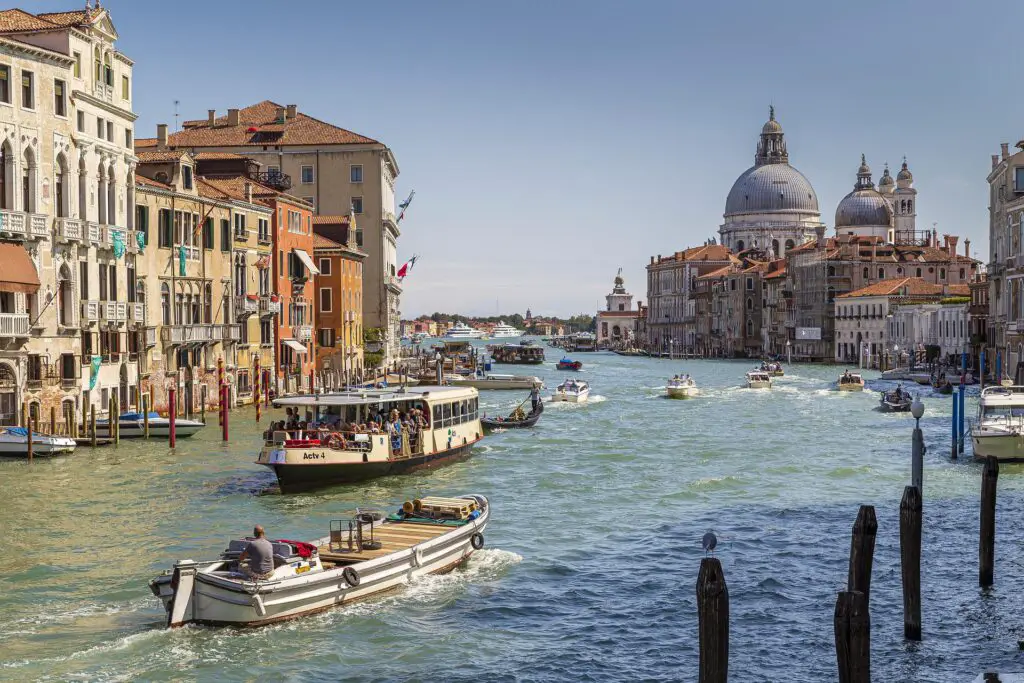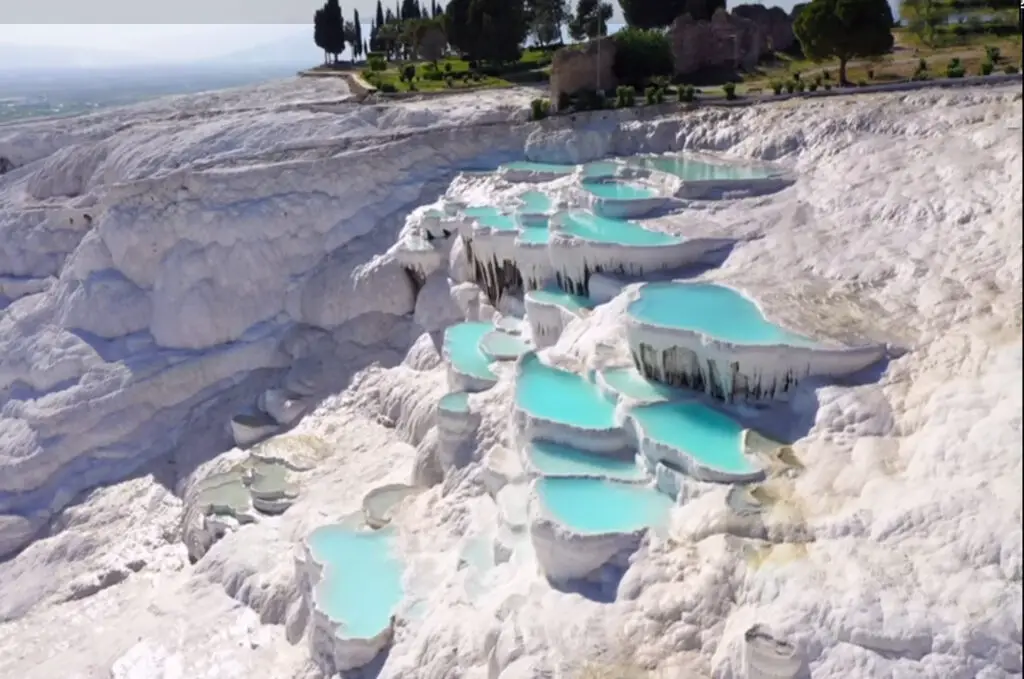Aphrodisias is an archaeological site located in southwestern Turkey, approximately 230 kilometers from Izmir. Aphrodisias Turkey was a prominent city in ancient times, known for its beauty and devotion to the goddess Aphrodite. Today, it is recognized as one of the best-preserved archaeological sites in Turkey and is a popular tourist destination for those interested in ancient history and archaeology.
History of Aphrodisias Turkey
The city of Aphrodisias was founded in the 3rd century BCE and was named after the goddess Aphrodite. It was originally a small settlement, but it grew rapidly over the centuries, becoming an important center of art, culture, and religion. The city was known for its beautiful marble sculptures and was a center for the worship of Aphrodite, who was believed to have been born in the nearby mountains.
During the Roman period, Aphrodisias became a major city, with a population of around 30,000 people. It was known for its impressive public buildings, including a stadium, a theater, and a monumental gateway. The city also had a large forum, which was surrounded by public buildings and temples. The Temple of Aphrodite was the most important religious building in the city and was located on a hill overlooking the city.
Decline of Aphrodisias Turkey
The decline of Aphrodisias began in the 7th century CE when the city was conquered by the Arabs. The city was abandoned, and over time, it was forgotten. It was rediscovered in the 20th century by archaeologists who were amazed at the level of preservation of the ancient city. Today, the site is a popular destination for tourists and archaeology enthusiasts.
One of the most impressive features of Aphrodisias Turkey is its marble sculptures. The city was known for its high-quality marble, and many of the sculptures are still in excellent condition. The most famous sculpture is the Aphrodite of Aphrodisias, which is now housed in the Istanbul Archaeology Museum. Other notable sculptures include the statues of Roman emperors and the reliefs on the Temple of Aphrodite.
In addition to the sculptures, there are many other well-preserved buildings and structures in Aphrodisias Turkey. The stadium, which could seat up to 30,000 people, is still in excellent condition, as is the theater, which could seat up to 10,000 people. The monumental gateway, which was built in the 2nd century CE, is also still standing and is one of the most impressive structures at the site.
Pictures Gallery












Aphrodisias Museum
The Aphrodisias Museum, located in the picturesque town of Geyre near Denizli, Turkey, is a captivating destination for history enthusiasts, archaeology lovers, and art aficionados. It houses a remarkable collection of artifacts that tell the story of the ancient city of Aphrodisias, a renowned center of art and culture in the Roman Empire.
The museum itself is situated within the archaeological site of Aphrodisias, providing visitors with a unique opportunity to explore the remains of this once-thriving city and gain a deeper understanding of its rich history. The museum building itself is a work of art, designed to blend harmoniously with the surrounding landscape and showcase the archaeological treasures it holds.
As you enter the museum, you are greeted by an impressive display of sculptures, reliefs, and architectural fragments that reflect the artistic brilliance of Aphrodisias. The collection includes statues of deities, emperors, and notable citizens, offering a glimpse into the religious and social life of the ancient city. The attention to detail and the skillful craftsmanship of these artworks are truly awe-inspiring.
One of the highlights of the Aphrodisias Museum is the Sebasteion Hall, which houses the famous marble reliefs from the Temple of Aphrodite. These intricately carved panels depict mythological scenes, divine figures, and historical events, providing valuable insights into the cultural and political context of Aphrodisias during its heyday.
The museum also features a section dedicated to the renowned Aphrodisian School of Sculpture, showcasing masterpieces created by the city’s talented artists. Here, you can admire the delicate beauty of marble statues, the expressive facial features, and the skillful rendering of drapery, which exemplify the artistic excellence achieved by the Aphrodisian sculptors.
Beyond sculptures and reliefs, the Aphrodisias Museum presents a diverse range of artifacts, including ceramics, coins, jewelry, and everyday objects, providing a holistic view of life in ancient Aphrodisias. These artifacts offer insights into various aspects of daily life, such as domestic activities, trade, and religious practices, enriching our understanding of this vibrant ancient city.
Visiting the Aphrodisias Museum is a journey back in time, allowing you to immerse yourself in the captivating world of ancient Aphrodisias and appreciate the enduring legacy of its art and culture. The museum’s expertly curated exhibits, combined with the serene and evocative setting of the archaeological site, create an unforgettable experience for visitors of all ages.
Whether you are a history enthusiast, an art lover, or simply curious about the wonders of the ancient world, the Aphrodisias Museum invites you to discover the remarkable heritage of this extraordinary city and appreciate the timeless beauty of its artistic achievements.
Stadium of Aphrodisias

The ancient city of Aphrodisias, located in present-day Turkey, was not only known for its artistic and cultural achievements but also for its sporting prowess. At the heart of this remarkable city stands the Aphrodisias Stadium, a testament to the passion for sports and the grandeur of athletic competitions in the ancient world.
Built during the Roman period, the Aphrodisias Stadium was an architectural marvel and a symbol of the city’s prominence. Spanning approximately 270 meters in length, the stadium could accommodate thousands of spectators who gathered to witness thrilling sporting events, particularly athletic contests.
The stadium’s construction was a masterpiece of engineering, designed to provide optimal viewing angles for the audience. Its horseshoe-shaped seating arrangement, constructed from carefully cut stone blocks, offered spectators an unobstructed view of the action taking place on the central track.
The central track, known as the “pistis,” was the stage for various athletic competitions, including foot races, long jumps, and discus throws. These events attracted skilled athletes from far and wide, who competed fiercely for glory and honor. The stadium was a place where physical prowess was celebrated, and victors were revered as heroes.
Beyond the central track, the Aphrodisias Stadium featured a variety of structures and spaces that supported the sporting activities and enhanced the spectator experience. The stadium had arched entranceways, vaulted corridors, and staircases that facilitated the flow of people entering and exiting the venue.
Adjacent to the stadium, athletes and officials prepared for their competitions in the “palestra,” a training ground equipped with exercise areas and facilities. This space allowed athletes to hone their skills and prepare for the intense sporting challenges they would face in the stadium.
The Aphrodisias Stadium was not only a hub for athletic competitions but also a place where the community gathered to celebrate their shared love for sports. The cheers and applause of the spectators reverberated through the stadium, creating an electric atmosphere that added to the thrill and excitement of the events.
Today, visitors can explore the remarkable ruins of the Aphrodisias Stadium and imagine the vibrant scenes that once unfolded within its walls. Although the grandstands have largely deteriorated over time, the sheer scale of the stadium and its architectural features still evoke a sense of awe and admiration.
As you wander through the ancient stadium, you can envision the athletic contests that once took place, the cheers of the crowd, and the spirit of competition that filled the air. The remnants of this sporting arena transport you back in time, offering a glimpse into the sporting traditions and cultural heritage of the ancient world.
The Aphrodisias Stadium stands as a testament to the enduring human fascination with sports and the pursuit of excellence. It serves as a reminder that, across the centuries, people have come together to witness and celebrate the feats of athleticism, finding inspiration and joy in the achievements of the human body and spirit.
Visiting the Aphrodisias Stadium is an opportunity to connect with the ancient past, to marvel at the architectural ingenuity of the Romans, and to appreciate the significance of sports in shaping the cultural fabric of societies. It is a place where history comes alive, and the echoes of the past resonate with the present, reminding us of the universal appeal of athletic competition and the timeless human quest for greatness.
Visitors to Aphrodisias can explore the site on foot and take guided tours to learn more about the history of the city. There is also a museum on site that displays many of the artifacts that have been found at the site, including the famous sculptures.
In conclusion, Aphrodisias is an impressive archaeological site that offers visitors a glimpse into the past. Its well-preserved marble sculptures, public buildings, and temples provide a unique insight into the culture and history of ancient Turkey. Whether you are an archaeology enthusiast or simply interested in ancient history, Aphrodisias is a must-visit destination in Turkey.







